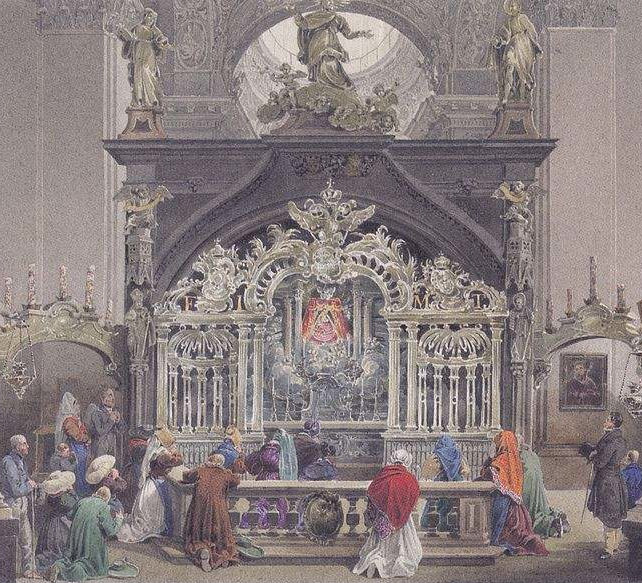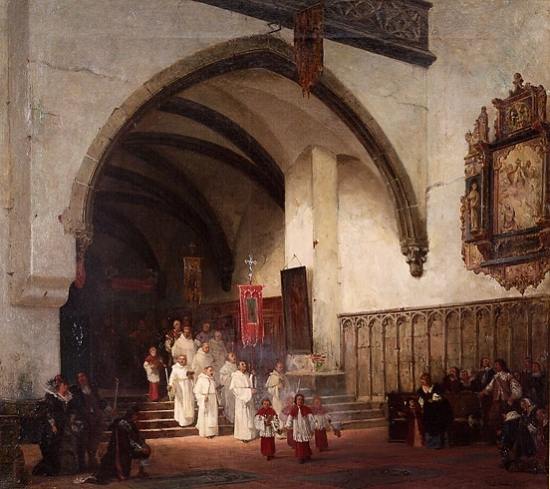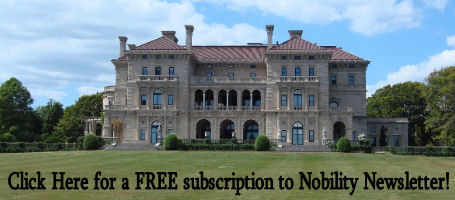Such a vision naturally gives religion great meaning. It is not merely a teaching of dogmas or catechism, but a way of finding magnificence, meaning, and happiness already in this world. Contrary to those who believe religion only teaches resigned unhappiness in this life, medieval man found it incomprehensible that this world would not have a serious foretaste of the happiness to come.

Painting of Freiburger Münster, the Cathedral of of Freiburg im Breisgau, Germany. Painting by Carl Georg Enslen.
However, this notion of happiness was of a spiritual and supernatural character reflected in some material aspects of this life and based on the joy of understanding the universe. It was not a materialistic notion from which comes the sadness and illusion of confiding in perishable things.

Painting of Grace Chapel in Mariazell Basilica, also called Basilica of the Birth of the Virgin Mary, located in Austria. Painting by Eduard Gurk.
“One of the greatest achievements of the Middle Ages,” writes Robert Southern, “was the detailed development of this idea of a universal human society as an integral part of a divinely ordered universe in time and in eternity, in nature and supernature, in practical politics and in the world of spiritual essences.”*
* R. W. Southern, Western Society and the Church in the Middle Ages (London: Penguin Books, 1970), 22.
John Horvat, Return to Order: From a Frenzied Economy to an Organic Christian Society—Where We’ve Been, How We Got Here, and Where We Need to Go (York, Penn.: York Press, 2013), 319-20.












